Introduction
The Wat Pho temple, one of the 6 highest grade royal temples of Thailand is located on Rattanakosin Island, south of Grand Palace in Bangkok. Popularly known as the temple of Reclining Buddha, many tourists visit this Buddhist temple every year. Also spelled as Wat Po, this is a famous tourist attraction in Bangkok. The Memory of the World Program of UNESCO has recognized marble illustrations and inscriptions.
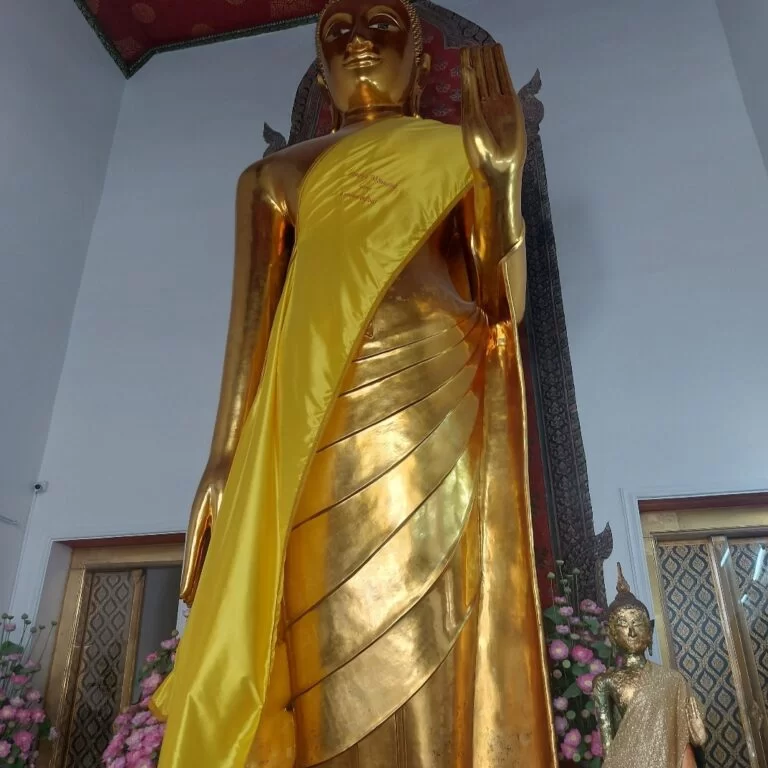
Best time to visit Wat Pho temple
Less crowd in the mornings.
November to March. Temperatures range between 29C (85F) and 34C (93F)
How to get to Wat Pho temple
The best way to reach Wat Pho is to take MRT blue line to Sanam Chai metro station. Wat Pho temple is about 7-minute walk from here. The interchange station between MRT blue line and Sukhumvit line is Asok and between MRT blue line and the Silom line is at Saladaeng.
The other way to go to Wat Pho is to take BTS silom line to Saphan Taksin station. Take the exit 2 out of Saphan Taksin station to Sathorn Pier. Then take the boat to ThaChang Pier. Short walk from here.
Open timings and tickets
These may change over time.
The Wat Pho is open from 8 AM to 6.30 PM and costs 300 baht.
Dress Code at Wat Pho temple
The dress code requires the body to be covered including legs and arms till elbows. If your dress doesn’t fit the requirement, you can rent or buy the required clothing there.
Time Required to see
About 1 hour
Things to do at Wat Pho temple
- Visit Reclining Buddha, one of the largest Buddha Statues in Thailand.
- Visit Phra Ubosot. Buddhist rituals happen here.
- Visit Bodhi tree.
- Visit chedis (stupas).
- Visit viharas.
- Visit the building Tamnak Wasukri. This opens once a year.
- Drop coins in 108 bronze bowls near Reclining Buddha. The belief is that it will bring good luck.
- Get a Thai Massage.
History of Wat Pho temple
A temple by the name Wat Photaram existed since long. Wat Photaram became Wat Pho. The date of construction and founder is unknown. Wat Pho temple has reference to Bodhi tree in Bodh Gaya, India and is one of the oldest temples in Bangkok.
The King Rama I who reigned from 1782 to 1809 moved the capital from Thonburi to Bangkok. He built Grand Palace by the side of Wat Pho and also renovated Wat Pho. The temple has Buddha images from Ayutthaya, Sukothai and other places. This King renamed the temple as Wat Phra Chetuphon Vimolmangklavas and it became the main temple during his period. Enshrined here are some of his ashes.
The King Rama III reigned from 1824 to 1851. The King renovated the temple and turned it to public center of learning. The walls of the buildings have inscriptions and diagrams of various subjects. Many of those structures still exist.
The King Rama IV who reigned from 1851 to 1868 changed the name to Wat Phra Chetuphon Vimolmangklararm. During the reign of Rama IV a chedi was constructed and minor repairs done.
The Wat Pho temple has school of Thai medicine and is birthplace of traditional Thai massage.
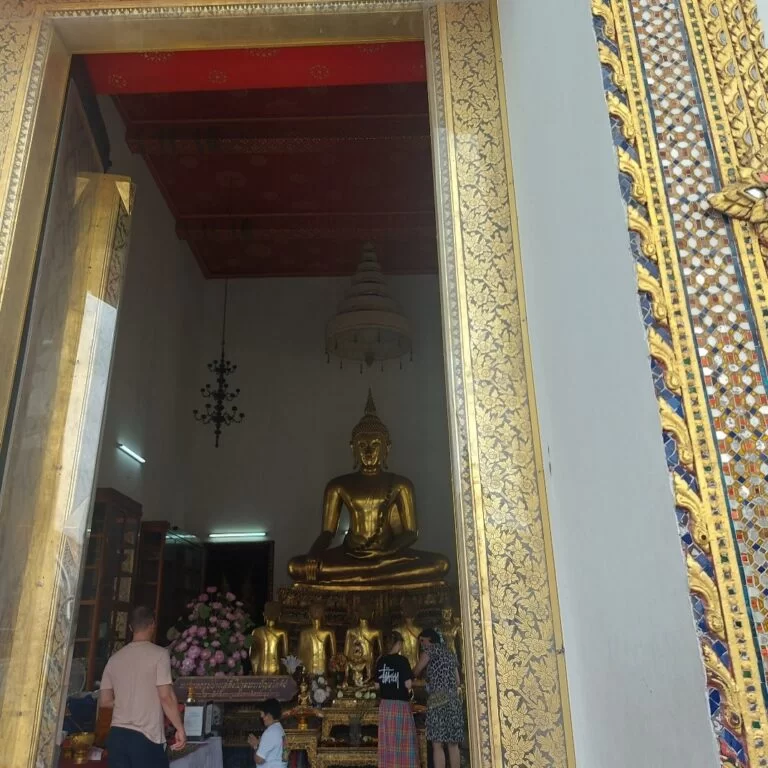
Shoe Racks
At some places put your shoes in the carry bag provided and carry them with you inside the Wat Pho temple. While exiting place the empty bags in the bins provided at the exit.
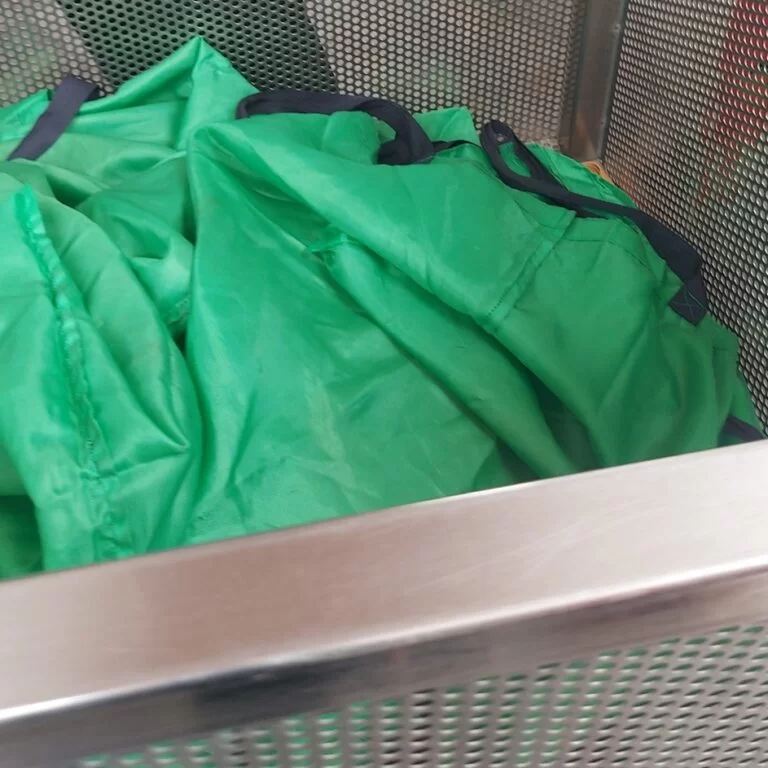
Architecture of Wat Pho temple
Wat Pho temple is in an area of 80,000 square meters. It has the largest collection of Buddha images in Thailand. The temple has 46 m (151 ft) long reclining Buddha.
The Chetuphon Road divides the temple’s two walled compounds. The northern walled compound phutthawat is open to the visitors. The phutthawat has the Phra Ubosot (ordination hall) with viharn and the reclining Buddha. The southern walled compound sankhawat has the residential quarters for the monks and a school. The temple has 16 gates.
Phra Ubosot in Wat Pho temple is the most sacred ordination hall used for performing Buddhist rituals. Inside, there is Buddha on a three-tiered pedestal. There is a nine-tiered umbrella over the statue. Some ashes of Rama I are under the pedestal. In the hall there are ten images of Buddha disciples. Surrounding the hall there are stone depictions of the epic Ramakien. The hall is enclosed by Phra Rabiang which is a double cloister containing standing and sitting Buddha images on the inner side and the outer side. Phra Rabiang is intersected by four viharns that have Buddha in various positions. The east viharn contains standing Buddha that is eight meters tall. The west viharn has a seated Buddha sheltered by naga. There are four Phra prang or towers around the Phra Ubosot.
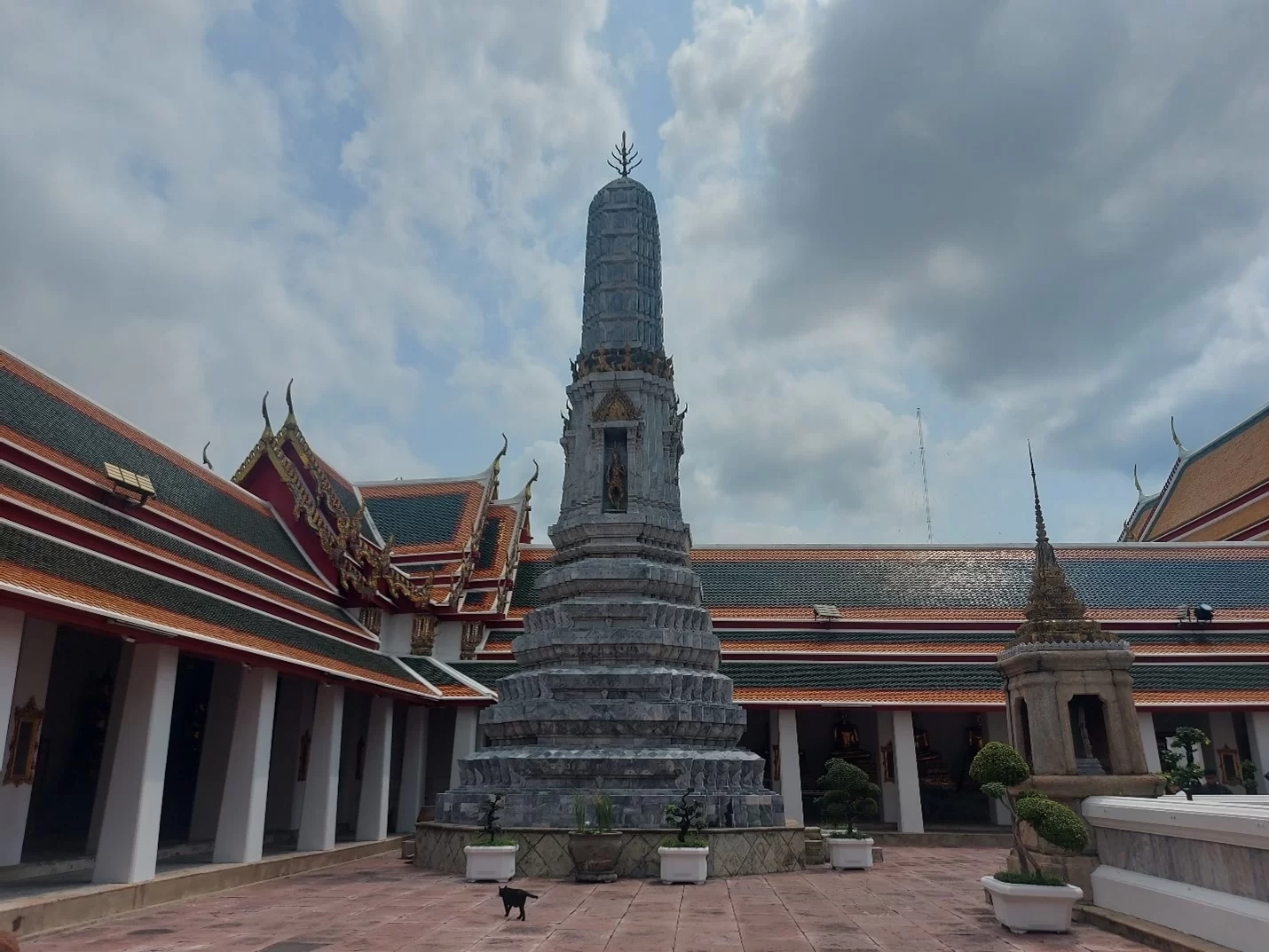
Chedis at Wat Pho temple
There are 4 great chedis or stupas in the temple premises. The chedis are about 42 m high. There are 71 small chedis (Phra Chedi Rai) outside the Phra Rabiang cloisters, each of 5 m height containing ashes of the Royal family. The 4 groups of larger chedis, with each group having 5 have the relics of Buddha.
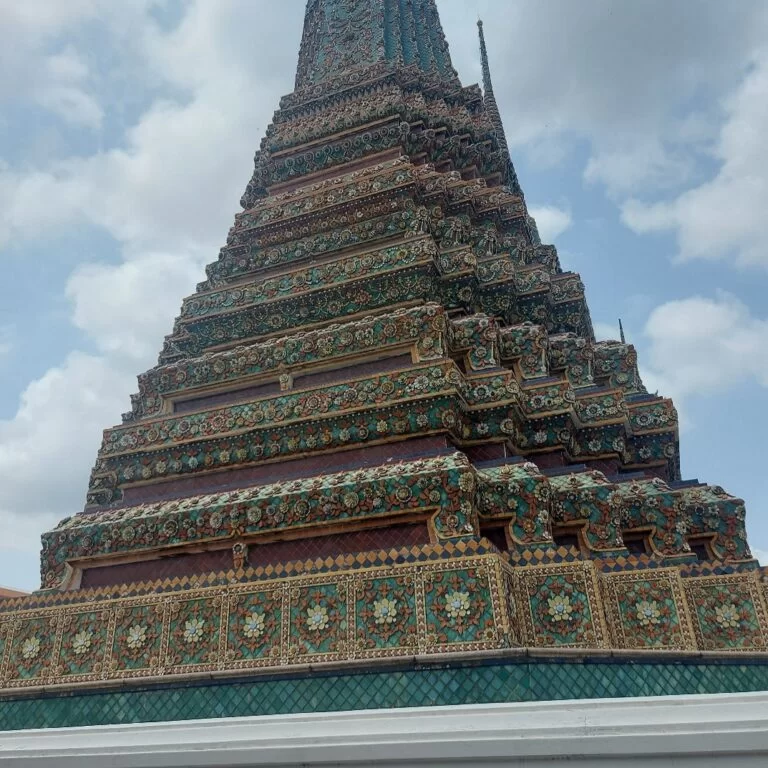
Phra Mondop
Phra Mondop has the Buddhist scriptures inscribed on palm leaves. This was built by King Rama III. Phra Mondop is not open to the public at Wat Pho temple. Around this are pavilions with mural paintings of Ramayana.
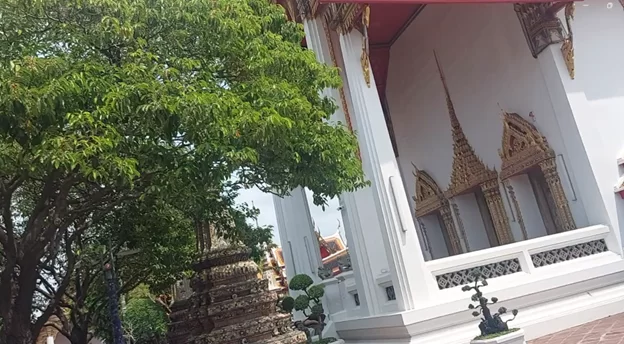
Sala Karn Parien
Sala Karn Parien is the hall next to Phra Mondop at Wat Pho temple. It is a learning and meditation hall. It contains the original Buddha image from the ordination hall.
Sala Rai are the 16 pavilions around the compound with some inscriptions depicting life of Buddha, traditional massage etc. One medicine pavilion has 32 drawings of massage positions and the other has inscriptions that protect the newborn.
Phra Viharn Kod is the gallery consisting of four viharas on the four corners of Phra Rabiang. Tamnak Wasukri is the building that is called the poet’s house. It is in the living quarters of the monks and opens once a year.
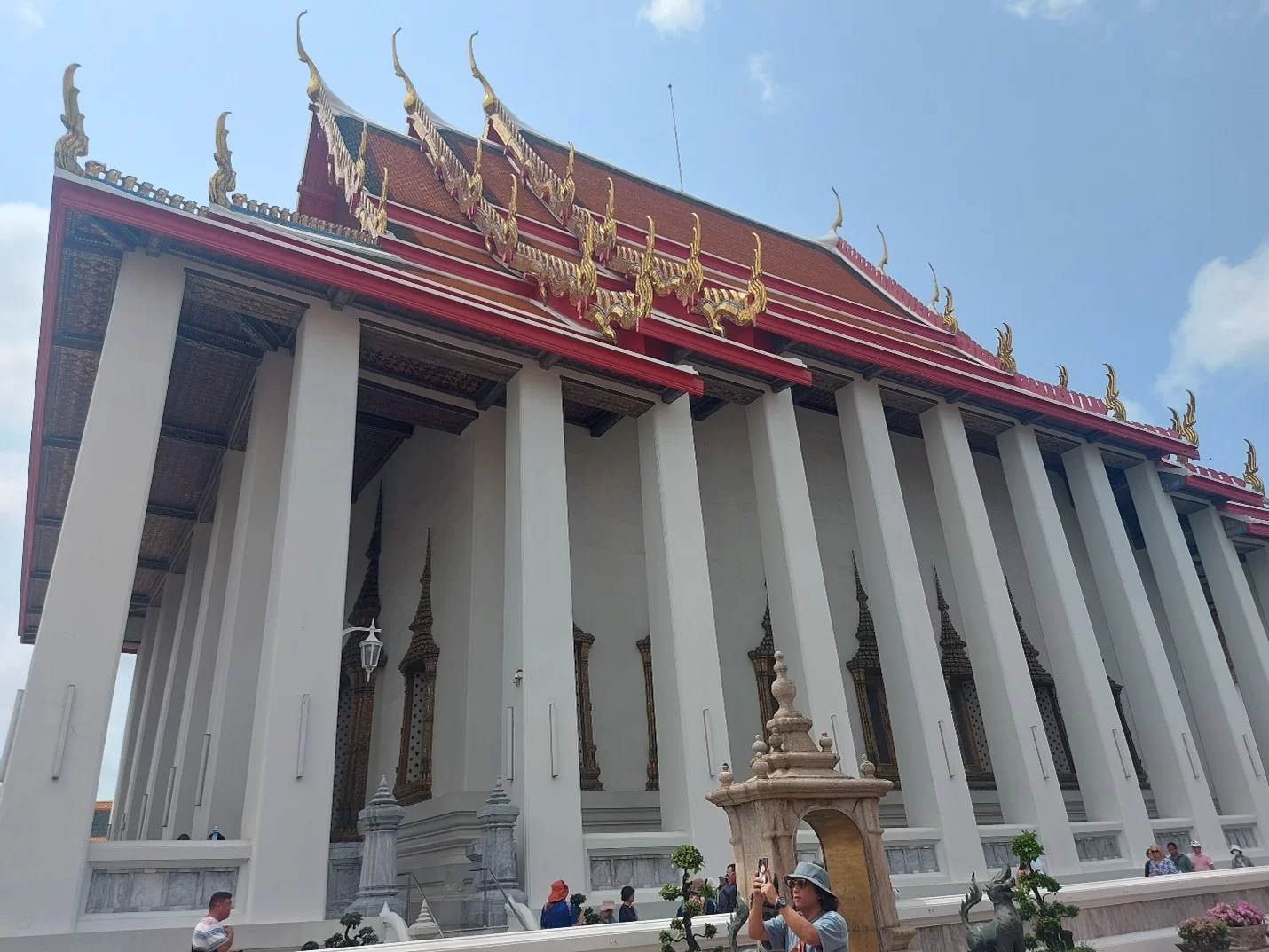
Reclining Buddha at Wat Pho temple
Reclining Buddha (Phra Buddhasaiyas) represents the entry of Buddha into Nirvana, the end of reincarnations. It is 46 m (151 ft) long and 15 m (49 ft) high. The soles of the feet are 4.5 m long and 3 m high. The right arm is under the head. The posture is of a reclining lion and is called sihasaiyas. There is a chakra (energy point) at the center of each foot. 108 bronze bowls representing 108 characters of Buddha are present. The belief is that dropping coins in the bowls brings good fortune. One can buy 108 coins for about 20 baht. The money collected is used to support the wat (temple).
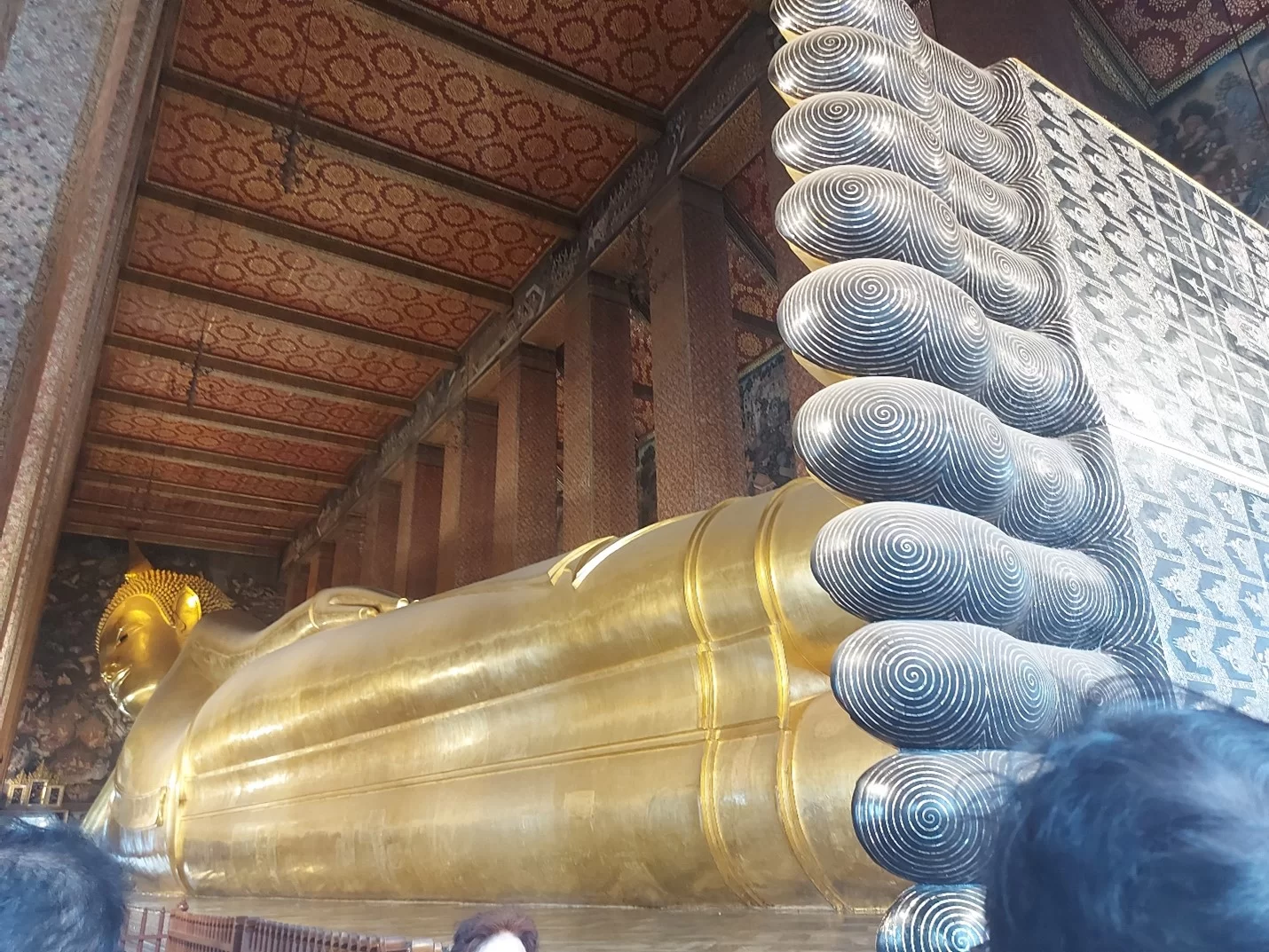
There is a school of traditional medicine and massage in the Wat Pho temple that offers courses in Thai medicine that includes Thai massage. This is approved by Thai Ministry of Education. The duration of the courses may be few weeks or a year, based on the course. 2 pavilions are used as classrooms. Visitors can get a massage for a fee. The Thai massage taught here has been included in UNESCO’s list of Intangible Cultural Heritage.
Facilities at Wat Pho temple
Parking
Restrooms
Shops
Gardens
Souvenir shop
Website
https://www.watpho.com/
Tourist attractions near Wat Pho temple
Grand Palace (10-minute walk from Wat Pho)
Wat Arun (15-minute ferry ride from Grand Palace)
National Museum (10-minute walk from Grand Palace)
Wat Ratchabophit (15-minute walk from Grand Palace)
